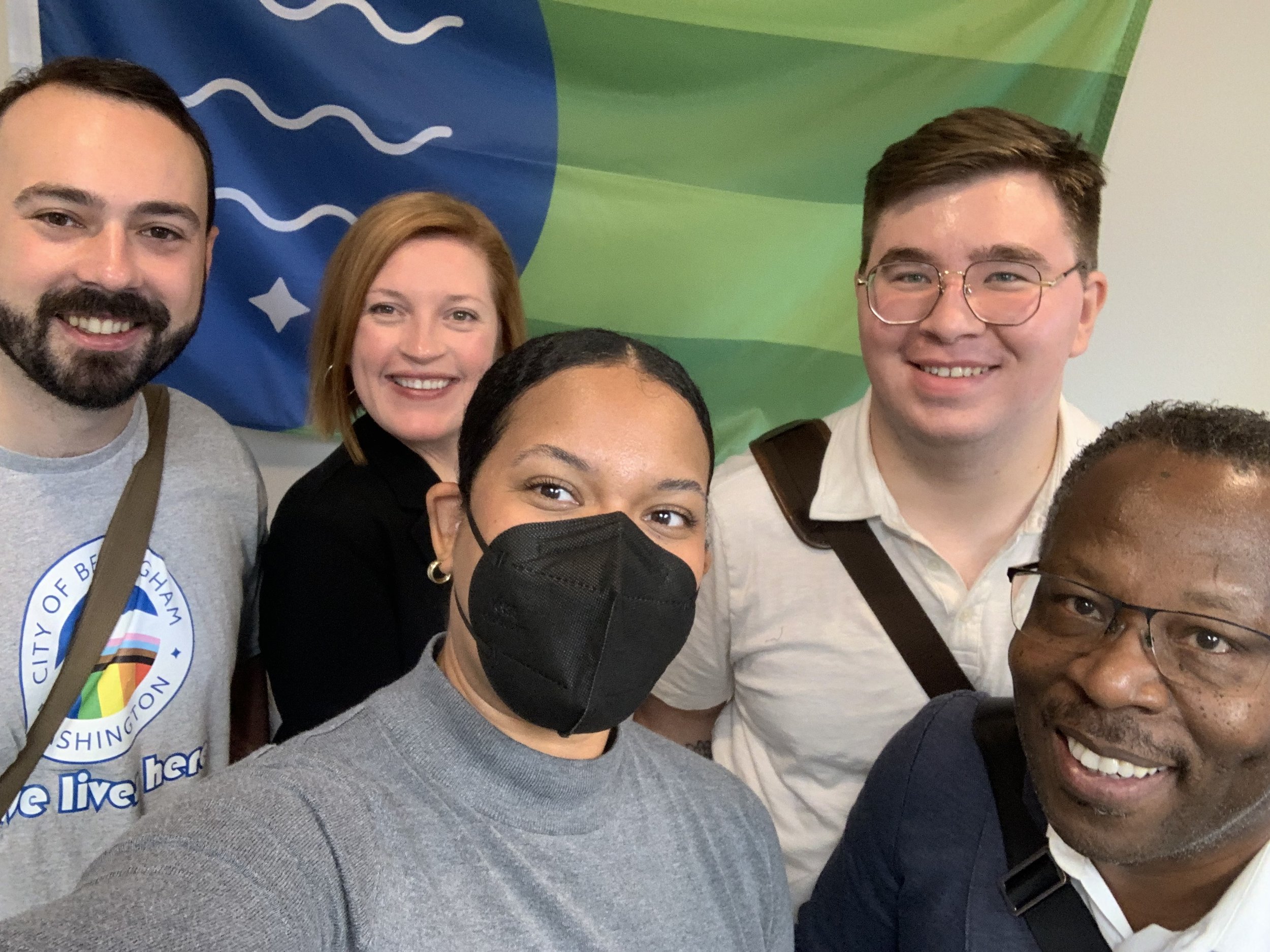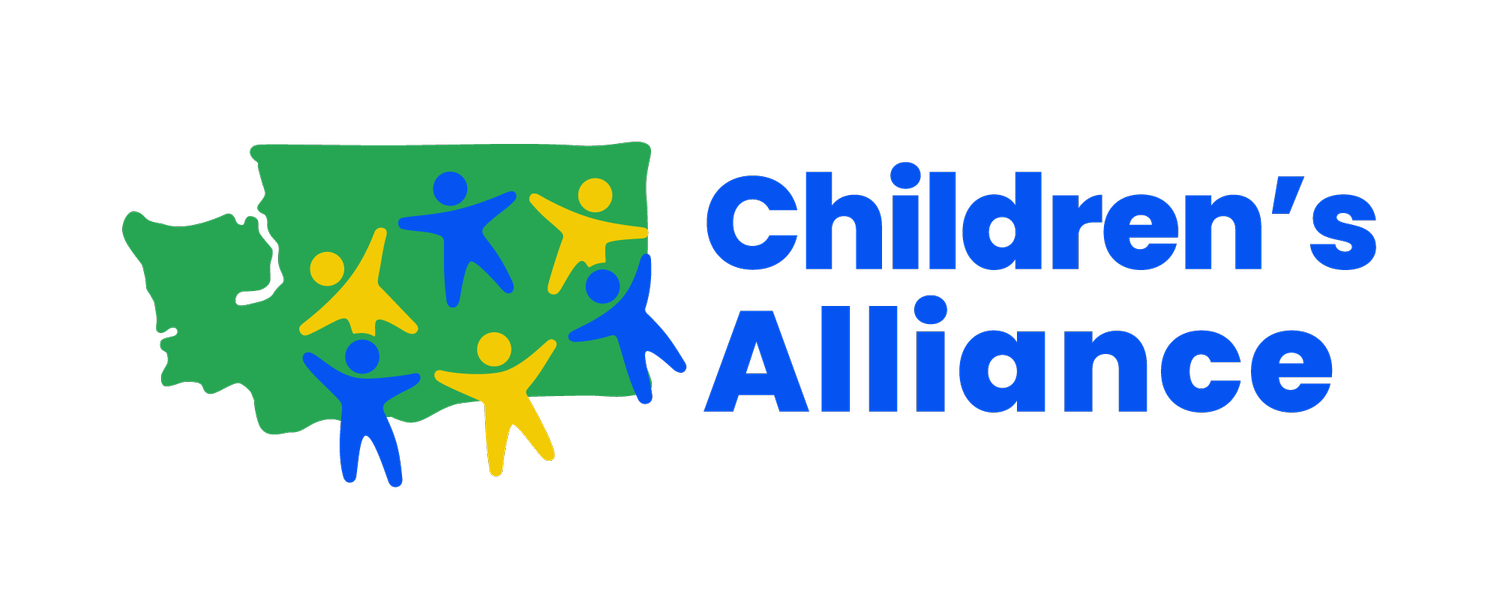WHAT WE LEARNED FROM COMMUNITY PARTNERS IN BELLINGHAM AND VANCOUVER
In what unique ways are communities in different areas of the state experiencing common issues?
This was the question guiding our work as we embarked on stakeholder engagement activities across Washington state late last month. As part of our preparation for the 2025 legislative session, members of the policy team are traveling to at least nine areas in Washington to meet with community partners and learn about the policy issues that most impact children and families in their areas. By early November, we will have visited Whatcom, Skagit, Clark, Skamania, Pierce, Spokane, Yakima, Walla Walla, and Kitsap Counties.
So far, members of our policy team have traveled to both ends of the I-5 corridor to meet with direct service providers and local leaders in Bellingham and Vancouver. Through these meetings, we learned about some of the most pressing issues children and families are facing when it comes to health equity, economic justice, and early learning. We also learned more about how those issues are showing up differently in these specific communities.
Bellingham
Our first visit was to Bellingham. Bellingham presents a unique set of circumstances in that it has almost 100,000 residents, a major university, a large hospital network, and is one of the last cities before you reach the Canadian border. However, it is also relatively isolated, situated well over an hour's drive from the major metropolitan areas of Seattle and Vancouver, B.C.
While in Bellingham, we met with community organizations, government officials, and non-profit health care providers. All of our conversations were anchored on the following question: What do you see as the biggest issues in your community? Here’s what we heard:
Youth behavioral health crisis – Recruiting providers is incredibly difficult due in part to a lack of clinicians working top of scope and cost of living barriers like housing and child care.
Affordable access to child care – Providers are facing “impossible” budgets due to differences in funding amounts and reporting requirements.
Housing instability – Local government officials and advocates shared that there is simply not enough supportive housing for young people transitioning into adulthood.
Community spaces– There is a lack of third places according to behavioral health providers and non-profit leaders supporting unhoused youth. Third places are “spaces that aren’t home or school where young people can access resources, build community, or just be,” says Northwest Youth Services, a non-profit organization supporting unhoused youth in Whatcom and Skagit Counties. Third places serve as settings of care and support for young people, and spaces where youth experiencing crisis can build community.
“Spaces that aren’t home or school where young people can access resources, build community, or just be.”
What became increasingly clear across our conversations was the reality that none of these issues exists in a vacuum. We will not be able to address the youth behavioral health crisis without addressing the workforce shortages. We also know that workforce shortages are made worse by the increased cost of living, and the cost of living is compounded by growing affordability and access issues of early learning and child care.



Vancouver
Shortly after visiting Bellingham, we traveled to the opposite end of the state to meet with stakeholders in Vancouver and surrounding areas in Southwest Washington. Similar to Bellingham, Vancouver is not a small town (it’s actually the fourth largest city in the state by population size), but is relatively isolated from the rest of the state. Its close proximity to Portland, Oregon, however, means that many of its residents live in Washington but work in Oregon. Similarly, many families in Southwest Washington find it easier to access services in Oregon, especially when the nearest in-state offering is sometimes hours away.
In Vancouver we met with providers who offer behavioral health services in community health settings across the Southwest and North Central regions of Washington. Hear is what we heard:
Lack of rural representation – Rural voices advocating for improved behavioral health services often go unheard.
Barriers to crisis care in Indigenous communities – Indigenous communities experience unique systemic barriers when it comes to accessing and providing mental and behavioral health crisis care.
Workforce recruitment is impacted by cost of living and child care – It is very difficult to recruit new providers to work in community health settings due to high cost of living, specifically housing and child care costs.
Telehealth doesn’t work for all families – While telehealth can help address distance-based obstacles to mental and behavioral health care, many rural families do not believe telehealth is best for their kids.
Professional licensing requirements can be a barrier – Many new and out-of-state providers report that it is too difficult to get licensed in Washington.
Many of these are echoes of our conversations in Bellingham, where the high cost of living and difficulties in recruiting new providers create a landscape of limited care options for kids and families in the area.
While in Southwest Washington, we also visited the only licensed child care and early learning center in all of Skamania County, where families often drive over an hour on winding roads to access child care. The limited number of providers creates scarcity, which is difficult to address due to many similar barriers affecting urban communities. For example, rising cost of living and low wages in the sector make it difficult for child care centers to recruit and retain staff. Simultaneously, the cost of child care are exceptionally high, due in part to certain administrative requirements, and are exacerbated by non-uniformity of funding between programs like Head Start and ECEAP. There is certainly not a shortage of people who want to provide child care to their community, but for many it is simply not possible to have a career in child care and support themselves—let alone their families.
What can we learn from these visits, and where do we go from here?
These visits provide further evidence that a number of changes need to be made at the policy level. Here are just a few:
Streamline licensing for mental health providers - We must streamline the licensure process for mental and behavioral health providers in order to increase and diversify the workforce.
Ensure equitable representation - We must ensure that rural and urban communities are equitably represented in conversations about potential policy changes so that new solutions can effectively address the unique needs of both.
Employ a multifaceted approach to address the youth behavioral health crisis - We must acknowledge that many issues intersect with, and exacerbate, the youth behavioral health crisis. Housing instability, lack of affordable child care, racial inequity, and economic instability all must be addressed if we want to see improvements in youth behavioral health.
Improve provider compensation and access to child care – We must support child care workers and the families who depend on them by prioritizing systems and infrastructure that support a thriving wage while simultaneously increasing access to affordable, high-quality child care.
What’s on the horizon for Children’s Alliance
We have just returned from stakeholder visits in Spokane and Yakima and will be sharing another blog post soon to discuss what we learned. In the coming weeks, we will travel to Walla Walla and Kitsap Counties to continue meeting with diverse community partners and stakeholders, and we look forward to sharing takeaways from those trips as well.
We know that 2025 will bring significant changes here in Washington, and it will be a critical to approach our advocacy work with focused and decisive energy. Our values as an organization also demand that our work be in close partnership with communities, and we are committed to continue meeting with stakeholders across Washington ahead of the 2025 session to develop a strong and targeted legislative agenda over the coming months.
Subscribe to our newsletter and reach out to action@childrensalliance.org if you know anyone we should be talking to. We are always searching for stories and experiences to inform our policy advocacy.

